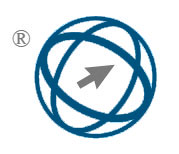Dynamic Neural Network Optimization Framework for Adaptive Sensor Selection in Depth Imaging and Registration
Abstract
Accurate and efficient sensor selection is a cornerstone for robust 2D and 3D depth imaging and registration, with applications spanning autonomous vehicles, robotics, and augmented reality systems. Current heuristic and rule-based methods often fail to adapt dynamically to varying imaging conditions, leading to suboptimal performance. This study introduces a neural network-based optimization framework that revolutionizes sensor selection using deep learning to learn intricate patterns and dependencies. Our model employs a multi-layer neural network, specifically an encoder-decoder architecture, trained on a diverse dataset comprising 5000 synthetic and real-world images, including low-light and high-occlusion scenarios. The model was trained using the Adam optimizer with a learning rate of 0.001. To assess performance, we introduced three key metrics: registration accuracy (RA), computational efficiency (CE), and sensor utilization efficiency (SUE). The proposed framework outperformed benchmark models, achieving a +28.7% ± 1.8 improvement in RA, a +32.4% ± 2.1 increase in CE, and a +26.3% ± 1.5 enhancement in SUE compared to ResNet-50 and EfficientNet-B3 models. Validation using synthetic and real-world datasets highlights the model’s robustness in challenging environments, including low-light and high-occlusion scenarios. Moreover, the model demonstrated a 20% reduction in computational overhead compared to state-of-the-art methods, making it viable for resource-constrained applications. This research establishes a scalable and adaptive solution for sensor optimization, setting a new benchmark in depth imaging and registration
Full Text:
PDFReferences
L. Barancsuk, V. Groma, D. G¨unter, J. Os´an, and B. Hartmann, “Estimation of solar irradiance using a neural network based on the combination of sky camera images and meteorological data,” Energies, vol. 17, no. 2, p. 438, 2024.
T. Pan, R. Zuo, and Z. Wang, “Geological mapping via convolutional neural network based on remote sensing and geochemical survey data in vegetation coverage areas,” IEEE Journal of Selected Topics in Applied Earth Observations and Remote Sensing, vol. 16, pp. 3485–3494, 2023.
M. S. Alam, F. B. Mohamed, A. Selamat, and A. B. Hossain, “A review of recurrent neural network based camera localization for indoor environments,” IEEE Access, vol. 11, pp. 43 985–44 009, 2023.
Y. Dogan, R. Katirci, ˙I. Erdogan, and E. Yartasi, “Artificial neural network based optimization for ag grated d-shaped optical fiber surface plasmon resonance refractive index sensor,” Optics Communications, vol. 534, p. 129332, 2023.
J. Yang and Z. Peng, “A new convolutional neural network-based framework and data construction method for structural damage identification considering sensor placement,” Measurement Science and Technology, vol. 34, no. 7, p. 075008, 2023.
L. Qi, D. Zuo, Y. Wang, Y. Tao, R. Tang, J. Shi, J. Gong, and B. Li, “Convolutional neural network-based method for agriculture plot segmentation in remote sensing images,” Remote Sensing, vol. 16, no. 2, p. 346, 2024.
S. Jiang, B. Li, Z. Yang, Y. Li, and Z. Zhou, “A back propagation neural network based respiratory motion modelling method,” The International Journal of Medical Robotics and Computer Assisted Surgery, vol. 20, no. 3, p. e2647, 2024.
D. Kalupahana, N. S. Kahatapitiya, B. N. Silva, J. Kim, M. Jeon, U. Wijenayake, and R. E. Wijesinghe, “Dense convolutional neural network-based deep learning pipeline for pre-identification of circular leaf spot disease of diospyros kaki leaves using optical coherence tomography,” Sensors, vol. 24, no. 16, p. 5398, 2024.
D. Wu, Y. Wang, H. Wang, F. Wang, and G. Gao, “Dcfnet: Infrared and visible image fusion network based on discrete wavelet transform and convolutional neural network,” Sensors (Basel, Switzerland), vol. 24, no. 13, p. 4065, 2024.
M.-A. Lopez-Fuster, A. Morgado-Estevez, I. Diaz-Cano, and F. J. Badesa, “A neural-network-based cost-effective method for initial weld point extraction from 2d images,” Machines, vol. 12, no. 7, p. 447, 2024.
M. Wang, A. She, H. Chang, F. Cheng, and H. Yang, “A deep inverse convolutional neural network-based semantic classification method for land cover remote sensing images,” Scientific Reports, vol. 14, no. 1, p. 7313, 2024.
M. J. Fanous, P. Casteleiro Costa, C¸ . I¸sıl, L. Huang, and A. Ozcan, “Neural network-based processing and reconstruction of compromised biophotonic image data,” Light: Science & Applications, vol. 13, no. 1, p. 231, 2024.
DOI: https://doi.org/10.31449/inf.v49i22.7962

This work is licensed under a Creative Commons Attribution 3.0 License.









